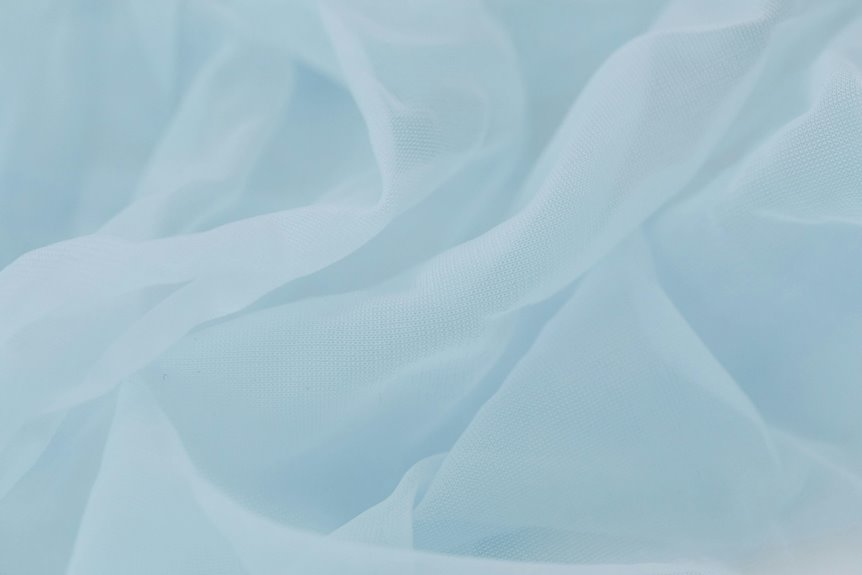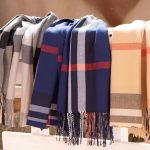You’ll find muslin is a lightweight, single-layer cotton fabric that’s smooth and breathable, great for structured projects like dressmaking or quilting. Double gauze, however, is made of two loosely woven cotton layers bonded together, making it softer, airier, and more durable—ideal for baby clothes and summer wear. Both are gentle on skin and easy to care for, but their texture and strength set them apart. Explore further to see which suits your needs best.
Table of Contents
Key Takeaways
- Muslin is a single-layer, plain-woven cotton fabric, while double gauze consists of two loosely woven cotton layers bonded together.
- Muslin has a smooth, lightweight texture; double gauze is soft, airy, and slightly crinkled for added texture.
- Double gauze is more durable and resilient due to its double layers compared to the thinner, less durable muslin.
- Muslin is best for structured projects like dressmaking and quilting, whereas double gauze suits breathable summer clothes and baby items.
- Both fabrics require gentle washing and low-heat drying to preserve softness and longevity but differ in feel and durability.
What Is Muslin Fabric?
Muslin fabric is a lightweight, plain-woven cotton material that’s known for its softness and breathability. When you choose muslin, you’re opting for a versatile fabric that’s easy to work with, whether you’re sewing clothing, curtains, or baby blankets.
Its open weave makes it airy, so it keeps you cool in warm weather. You’ll find muslin comes in various weights and finishes, from coarse to finely woven, allowing you to pick the perfect texture for your project.
Because it’s natural cotton, muslin is gentle on your skin and absorbs moisture well. Plus, it’s affordable and widely available, making it a popular choice for everything from dressmaking to quilting.
Natural cotton muslin is soft, moisture-wicking, affordable, and versatile for sewing and quilting projects.
You’ll appreciate how muslin’s simplicity and comfort fit many creative needs.
What Is Double Gauze Fabric?
Double gauze fabric offers a unique combination of softness and breathability thanks to its two layers of loosely woven cotton gauze. You’ll find it lightweight and airy, making it perfect for warm weather clothing, baby blankets, and summer bedding. The two layers are gently bonded, giving the fabric durability without losing its delicate feel. It drapes beautifully and is often praised for its hypoallergenic properties.
Here’s a quick snapshot:
| Feature | Description |
|---|---|
| Composition | Two layers of cotton gauze |
| Weight | Light, airy |
| Texture | Soft, slightly crinkled |
| Breathability | Excellent |
| Common uses | Baby items, summer clothes, bedding |
Weave and Texture Differences Between Muslin and Double Gauze
Although both fabrics are made from cotton, their weave and texture create distinct experiences that affect how you use them.
Muslin features a plain, single-layer weave that feels smooth and lightweight. When you touch muslin, you’ll notice its fine, even texture, which makes it ideal for applications like dressmaking or light curtains.
Double gauze, on the other hand, consists of two layers of loosely woven cotton gently tacked together. This gives it a soft, airy, and slightly crinkled texture, providing more breathability and a unique hand feel.
When you work with double gauze, you’ll appreciate its softness and subtle volume, perfect for baby clothes or summer blankets.
Understanding these differences helps you select the right fabric for your project’s needs.
Durability and Care for Muslin vs. Double Gauze
The unique textures and weaves of these fabrics influence not only how they feel but also how they hold up over time.
Muslin, with its single-layer weave, tends to be less durable and may wear out faster if you handle it roughly or wash it frequently. Double gauze, made of two layers of loosely woven cotton, offers greater strength and resilience, making it better suited for repeated use.
Muslin’s single-layer weave is less durable, while double gauze’s two layers provide extra strength and longevity.
When caring for both, wash them gently in cold water to prevent shrinking and maintain softness. Avoid harsh detergents and bleach, which can weaken fibers.
You can tumble dry on low heat or air dry to prolong their lifespan. Iron them on a low setting if needed, but double gauze typically requires less pressing due to its textured weave.
Best Uses for Muslin and Double Gauze Fabrics
When choosing fabrics for your projects, understanding the strengths of muslin and double gauze can help you pick the best fit.
Muslin’s lightweight, breathable nature makes it perfect for projects needing structure and easy care. Double gauze, with its soft, layered texture, suits items requiring gentle comfort and drape.
Here are the best uses for each fabric:
- Muslin: Ideal for dressmaking, quilting backings, and mock-ups where you want a crisp finish.
- Double Gauze: Great for baby clothes, lightweight scarves, and breathable summer tops that touch the skin softly.
- Both: Can serve as linings or lightweight curtains, depending on whether you want more structure or softness.
Choose based on your project’s need for durability, texture, and comfort.
Frequently Asked Questions
Can Muslin and Double Gauze Be Blended With Synthetic Fibers?
Yes, you can blend muslin and double gauze with synthetic fibers to add durability or stretch. Just remember, this might change their softness and breathability, so test the fabric to guarantee it meets your needs before using it.
Are Muslin and Double Gauze Fabrics Hypoallergenic?
You’ll find muslin and double gauze fabrics generally hypoallergenic since they’re made from natural fibers like cotton. They’re soft and breathable, reducing irritation risks. However, always check for chemical treatments that might affect sensitivity.
How Do Muslin and Double Gauze Fabrics Perform in Moisture-Wicking?
You wouldn’t expect fabrics to sweat, right? Well, muslin absorbs moisture but dries slowly, while double gauze wicks moisture away efficiently, keeping you cooler and drier—perfect for when comfort really matters.
What Environmental Impact Do Muslin and Double Gauze Fabric Productions Have?
You should know both muslin and double gauze involve cotton, which demands water and pesticides. Double gauze may use more resources due to layering. Choosing organic options helps reduce environmental impact considerably.
Are Muslin and Double Gauze Suitable for Dyeing and Printing?
You can dye and print both muslin and double gauze fabrics easily. They absorb colors well, but double gauze’s texture might give a softer, more muted look. Always test a small piece first to guarantee desired results.
- Comparing Mulberry Silk Charmeuse vs. Mulberry Silk Satin - June 21, 2025
- Your Guide to Finding Mulberry Home Fabric Stockists in the UK - June 21, 2025
- A Closer Look at Mulberry Silk Velvet Fabric - June 21, 2025




